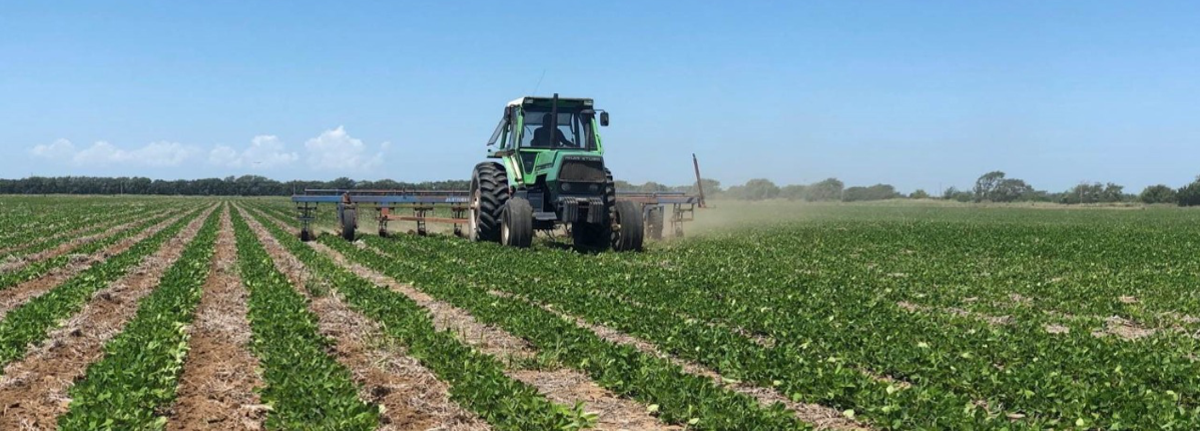After good rainfall levels recorded during the last days of December 2019 and in response to many requests for information, we decided to write a short report that can provide you with a quick heads-up on the state of the Argentine peanut crop.
We also opted to include our view of the current market conditions, based on our direct experience as well as information from other origins received by trusted sources.
As soon as our agronomists finish their usual tour around the peanut fields, we will provide the usual and more extensive crop report.
Argentine Peanut Crop & Market Highlights
Season 2019/2020
Argentine peanut crop state as of Jan 7th, 2020
After a worrisome period of drought throughout the winter and spring seasons, good rains finally came around the last days of 2019.
Therefore, December 2019 ended up being a good month in terms of rainfall records, which contributed to reverting the drought effects previously reported in the peanut crop.
In the following table, the cumulative rainfall in the Cordoba province, a comparison between 2019 values vs historical records and % variation by department can be seen.

Cumulative rainfall during December 2019, in the province of Cordoba
Towards the first days of January 2020, new rains were recorded in many towns and cities located in the Argentine peanut area, although they were more scattered and less intense than those at the end of December.
Of course rains were enthusiastically received by growers and shellers, who were in a moody state after the announcement of an increase in the export tax by the national government.
Peanut plants quickly came back to an active growing stage.
Here are a few pictures of the peanut crop’s current state:

The field above is located in the eastern area and shows a very good development, which is better than other areas of reference


This field is located in the Central Area and is a better representation of the current state of the Argentine peanut crop in general terms
It is important to highlight that these rains were timely to revert signs of drought stress, but by no means guarantee good results.
Rains were helpful for peanut plants to catch up with water needs, but there’s still a long way to go.
From now on, as we enter the growing stage in which water demands are highest, new rains are imperatively needed to achieve good results.
On the other hand, temperature records show higher levels than usual for this time of the year, so they should contribute to the development of the peanut crop as well.
Market situation
A clear bullish trend is observed, mainly driven by the problems faced by the US with their new crop.
Unofficial sources estimate that more than 70% of the crop will suffer from some quality issues, mainly aflatoxins, so EU quality stocks are expected to be limited.
Other sources are more optimistic regarding the affected percentage, although something seems clear at this point of time: the US will deal with a problematic crop.
Therefore, a big portion of the US production will need to be blanched, destined to oil purposes or exported to China as in-shells.
We are hearing price levels of around $1700/MT for raw jumbos, EU specs, which is a high level compared to the rest of the origins. Perhaps other origins will reach similar levels eventually.
As of today, the only origin in conditions to supply EU quality for the next few months is Argentina, so that’s part of the explanation why the price has been steadily rising during the last few weeks.
However, there is not much availability of current crop left in Argentina, since many buyers anticipated this situation and rushed to book material after the first symptoms of a bullish trend.
Brazil is actually dealing with their new crop, which is expected to be ready for shipments around April 2020. As of today, the crop looks like a good prospect, although there are a couple of months to go.
India is expected to have a good crop and will likely position itself as the main supplier for non-EU markets.
China is also dealing with a good crop, but most efforts are destined to cope with their domestic market, which nowadays exhibits extremely high prices.
All in all, this is our current view of the present market.
It looks like a bullish trend will stay with us in the short and medium term.
It’s worth noting though that our words should be taken with a pinch of caution.
As we always say, the magic ball we use to predict the future is currently out of service.
Other questions or comments?
Contact us: stembras@gastaldihnos.com.ar
Follow Gastaldi on social media:



